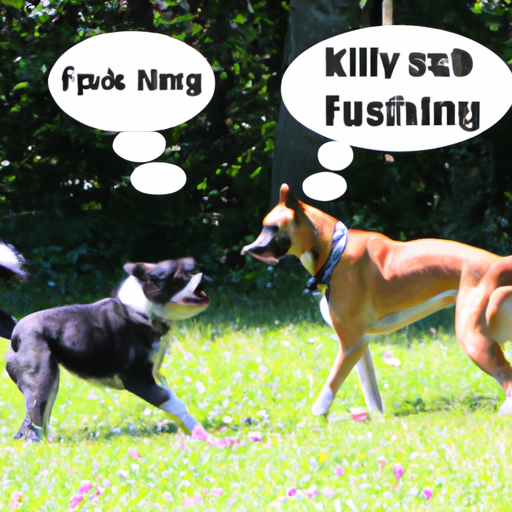As a caregiver, you may have noticed that your four-legged companion often seems to enjoy a rough and tumble with their furry friends. But have you ever wondered, ‘why do dogs play fight?’
Understanding Canine Behavior
Firstly, it’s essential to understand that play fighting is a natural part of canine behavior. Just as humans learn through play in their early years, dogs too use play as a way to learn about their world and develop their social skills.
- Socialization: Play fighting allows dogs to interact with other dogs and learn the nuances of canine communication. This includes body language, vocalizations, and bite inhibition.
- Exercise: Play fighting provides an excellent form of exercise, keeping your dog physically fit and mentally stimulated.
- Bonding: Play fighting can also serve as a bonding activity, strengthening the relationship between dogs.
Recognizing Playful Behavior
Understanding the difference between play fighting and actual aggression is vital. Here are some behaviors that indicate your dog is merely playing:
- Bow position: This is when your dog lowers their front end while keeping their rear up. It’s an invitation to play.
- Exaggerated movements: Playful movements are often exaggerated and less coordinated.
- Taking turns: During play fights, dogs often switch roles, with each getting a chance to be on top.
Reasons for Play Fighting
| Reasons | Explanation |
|---|---|
| Learning | Play fights help puppies learn how to be dogs. |
| Exercise | It’s a fun way to stay active and burn off energy. |
| Socialization | Play fights teach dogs how to interact appropriately with their peers. |
When Play Fighting Becomes a Problem
While play fighting is usually harmless fun, it can sometimes escalate into a real fight. If you notice any of the following signs, it’s time to intervene:
- The play becomes very rough and intense.
- One dog seems to be trying to get away from the other.
- There are signs of stress or fear, like pinned ears or tucked tail.
How to Encourage Safe Play
To ensure that play fighting remains safe and fun, follow these tips:
- Supervise play sessions: Always keep an eye on your dogs when they are playing together.
- Establish rules: Set boundaries for play and intervene if they are crossed.
- Reward good behavior: Praise your dog when they play nicely to reinforce positive behavior.
FAQs
Q1: Is play fighting a sign of aggression?
No, play fighting is not a sign of aggression but a normal part of canine behavior.
Q2: How can I tell if my dogs are play fighting or real fighting?
Look for signs like the play bow, exaggerated movements, and role-switching to determine if it’s a play fight.
Q3: What should I do if I think my dogs are actually fighting?
If you think your dogs are actually fighting, it’s best to intervene immediately to prevent any potential injuries.
Q4: Can play fighting lead to real fights?
In rare cases, play fighting can escalate into real fights if it gets too intense or if one dog becomes overly dominant.
Q5: How can I encourage safe play fighting?
You can encourage safe play fighting by supervising play sessions, establishing rules, and rewarding good behavior.



